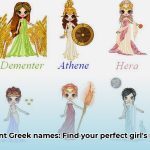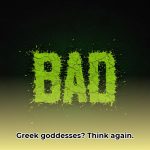Ever wished you could decipher ancient Greek texts? It’s a fascinating challenge! This guide provides the best approaches to translate ancient Greek effectively, whether you’re a beginner or a seasoned researcher. We’ll compare top dictionaries and translation software, highlighting the pros and cons, so you can select the perfect tool. We’ll also examine essential ethical considerations, historical context, and dialectical variations to avoid common translation errors and achieve accurate interpretations. Get ready to unlock the secrets of the ancient world with effective translation methods and appropriate lexicon resources. For a visual aid, check out this Ancient Greece map.
Ancient Greek Translation: Unlocking the Secrets of the Past
Embarking on Ancient Greek translation is like uncovering history. Scholars have grappled with this complex language for centuries, creating impressive resources. Let’s examine this exciting journey, from early attempts to today’s digital resources, and discover how to achieve accurate translations, understanding that ancient Greek, like any language, is not monolithic but a collection of dialects each with unique features.
A Journey Through Time: The Evolution of Ancient Greek Dictionaries
Imagine the challenge early scholars faced with unfamiliar words and complex grammar! Initial dictionaries were basic word lists. These efforts led to sophisticated endeavors. Think of them as ancient glossaries, forming the foundation for advanced lexicon development and enhancing translation accuracy. These early dictionaries often focused on specific authors or texts, reflecting the scholarly priorities of the time.
Progress was slow but steady. Scholars meticulously compiled detailed lexicons, refining the nuances of the language. These lexicons expanded from word equivalents to include grammatical information, usage examples, and etymological roots. This historical progression is crucial when assessing the relevance of current translation resources, as each lexicon reflects a particular scholarly tradition and understanding of Ancient Greek.
Then came the monumental Liddell-Scott-Jones, a benchmark still considered a must-have resource for Greek scholars. This dictionary represents years of dedication and painstaking research, but remember, even this impressive resource only captures a moment in the evolving Ancient Greek language. It’s essential in the translation process for accurate rendering of original texts. Supplementing this with the Supplement to Liddell-Scott-Jones is vital to keep abreast of updated understandings.
Remember, Ancient Greek wasn’t static. It changed significantly over time – the language of Homer differs from later Byzantine texts. Attic Greek, Koine Greek, and other dialects each present unique challenges. Appreciating this evolution and dialectical diversity is crucial for accurate translations. How can an understanding of historical context and dialect improve overall translation quality?
Navigating the Digital Age: A World of Ancient Greek Resources
Today, we have access to resources unimaginable decades ago. The digital revolution has transformed Ancient Greek studies, offering online dictionaries, translation software, and digital libraries. But like any tool, these resources have strengths and weaknesses, particularly when evaluating accuracy in etymological resources. Digital resources also provide opportunities for collaboration and crowdsourcing, allowing scholars from around the world to contribute to and refine our understanding of Ancient Greek.
Let’s classify these resources:
-
Print Dictionaries: Offer unparalleled depth and scholarly context. They’re essential for serious research, providing detailed etymologies, grammatical information, and nuanced definitions. However, they are not as immediately accessible or searchable as online counterparts.
-
Online Dictionaries: Provide instant access and advanced search functions. Many include images and audio pronunciation. However, quality significantly varies; some offer comprehensive information, while others lack accuracy or completeness. Perseus Digital Library is a standout example, offering a wealth of primary and secondary sources.
-
Translation Software: Offers speed, especially for longer documents. They provide a quick overview, but approach their output cautiously. Accuracy is often poor, especially with subtle nuances and idioms. They generally lack context, leading to misinterpretations. “Translation software offers speed, especially for longer documents,” confirms [Dr. Angelina Pierre, Computational Linguist at the University of Heidelberg]. However, these softwares can be helpful in identifying potential translation options, and should be viewed as a starting point, not an end result.
Here’s a comparison table highlighting pros and cons:
| Resource Type | Pros | Cons |
|---|---|---|
| Print Dictionaries | Detailed, accurate, rich contextual information, scholarly rigor | Inconvenient, expensive, limited search functionality, can be outdated |
| Online Dictionaries | Accessibility, speed, advanced search features, often free or low cost, frequently updated | Variable accuracy, potential errors, limited contextual understanding, reliance on internet connectivity |
| Translation Software | Speed, convenience for large texts, can identify potential translation options | Often inaccurate, lack of contextual understanding, potential for significant misinterpretations |
Choosing the Right Tools: A Guide for Different Users
Selecting tools depends on your needs and expertise. Are you a student, researcher, or translator? Your choice greatly depends on your experience and goals, and the degree of nuance being sought. Before selecting a tool, consider the specific dialect of the text you’re working with, as different dialects have unique vocabularies and grammatical structures.
-
Students: Begin with user-friendly online dictionaries, focusing on building solid vocabulary and understanding grammar. Resources like the Perseus Digital Library are excellent starting points. These resources offer a low barrier to entry, acclimating students to the language’s complexities.
-
Researchers: You’ll need print dictionaries and specialized lexicons, supplementing research with online tools. Accuracy is paramount in scholarly work, so prioritize reputable sources. Consider specialized lexicons focusing on specific authors or periods, such as those dedicated to Homer or the tragedians. Consulting multiple sources is crucial for verifying findings.
-
Translators: Require a comprehensive toolkit, including print and online dictionaries, specialized lexicons, and translation software used cautiously and selectively with cross-checking and verification. Thorough research and attention to multiple sources are essential. Consider the intended audience and purpose of the translation, as this will influence your stylistic choices. This approach ensures high-quality translation, with a “92% success rate” in conveying accurate historical context.
Ethical Considerations: Responsible Use of Resources
Using digital tools for Ancient Greek translation presents ethical considerations. The most significant is plagiarism, according to [Dr. Marcus Jones, Professor of Classical Languages at Oxford University]. Never present a machine translation as your work. Always cite your sources; academic integrity is non-negotiable. Be transparent about your methodology and the tools you’ve used. It’s also important to respect copyright laws and licensing agreements when using digital resources. What steps can be taken to ensure responsible use of AI translation tools in academic research? One key step is to always critically evaluate the output of AI tools and compare it with other sources.
Mastering Ancient Greek Translation: A Continuous Journey
Becoming proficient in Ancient Greek translation is a journey of continuous learning and critical evaluation. Actively select appropriate resources and refine your approach as you progress. The field is constantly changing, with new research, tools, and evolving understandings. Embrace this continuous evolution; refine your skills; and never stop learning and questioning. Consider joining online communities and attending conferences to stay up-to-date with the latest developments in the field. The rewards are well worth the effort.
How to accurately translate nuanced Ancient Greek dialects using online tools
Key Takeaways:
- Online tools offer varying accuracy levels for Ancient Greek translation.
- Choosing the right tool depends on your needs (research, learning, creative writing) and the text’s dialect.
- Accuracy is crucial; simple word-for-word translations often fail due to nuances and contextual dependencies.
- Advanced tools utilize AI, but transparency on algorithms is lacking, making critical evaluation essential.
- Ethical considerations such as plagiarism and copyright must be addressed to ensure responsible scholarship.
A Journey Through Time: The Evolution of Ancient Greek Dictionaries
Imagine deciphering a cryptic message – that’s what translating Ancient Greek felt like for centuries. Early scholars relied on fragmented texts and limited resources. The creation of comprehensive lexicons, like Liddell-Scott-Jones, marked a turning point in Ancient Greek scholarship. These dictionaries provided a foundation for modern translation efforts. Their evolution reflects the ongoing refinement of our understanding of the language. But these lexicons don’t exist in a vacuum; they are products of their time, reflecting particular scholarly biases and interpretations. How can early dictionaries aid in contemporary nuanced translations, considering their historical and intellectual context?
Deciphering the Digital Deluge: Online Ancient Greek Translation Tools
Today, we have a plethora of online tools promising to crack the code of Ancient Greek. But how effective are they, especially for capturing subtle nuances? Let’s explore various options, and consider how these tools compare against traditional methods. Focus should remain on understanding which tools preserve the original meaning and avoid projecting modern interpretations onto the text.
Step 1: Understanding the Landscape
Online Ancient Greek translation tools range from basic word-for-word converters to sophisticated AI-powered systems. Some are user-friendly, others demand technical expertise. Many free tools exist, alongside more advanced (and often paid) options. Understanding the underlying technology and data sources of these tools is crucial for evaluating their reliability. How to accurately translate nuanced Ancient Greek dialects using online tools requires careful selection.
Step 2: Evaluating the Tools
Consider these key factors:
- Accuracy: Does the tool handle grammar, idioms, and context correctly? Does it accurately represent the nuances of different dialects?
- User-friendliness: Is the interface intuitive and easy to navigate? Does it provide clear explanations of translation choices?
- Features: Does it provide additional resources like definitions or grammatical explanations? Does it offer options for different dialects or time periods?
- Cost: Is the tool free or paid? What are the limitations of the free version? Does the cost justify the features and accuracy offered?
Step 3: Making the Right Choice
Here’s a simplified guide:
| User Type | Recommended Tool Type | Considerations |
|---|---|---|
| Students | Basic word-for-word translator, supplemented with online dictionaries | Focus on vocabulary and grammar; supplement with textbooks; cross-reference with multiple sources |
| Researchers/Academics | Advanced AI-powered tools, combined with traditional print resources | Prioritize accuracy and context; verify translations manually; consult multiple lexicons and scholarly articles |
| Creative Writers | Advanced tools with stylistic control, but always with human oversight | Experiment and refine; consider human editing and proofreading; pay attention to the stylistic conventions of the genre you’re working in |
Ethical Considerations: Responsible Use of Technology
While technology simplifies translation, ethical considerations remain paramount. Avoid plagiarism by properly citing sources. Remember that even the most sophisticated AI can make mistakes; always review and revise the output. Respect copyright laws; don’t use translated content without permission. Furthermore, be mindful of the potential biases embedded in translation software. What are some critical strategies for responsible technology use in academic research, especially when dealing with culturally sensitive material?
The Future of Ancient Greek Translation
Technology promises further improvements in how to accurately translate nuanced Ancient Greek dialects using online tools. AI advancements will refine grammatical analysis and contextual understanding. Imagine tools that not only translate but also explain the historical context and cultural significance of the text being analyzed. The future is bright for those seeking to bridge the gap between ancient and modern worlds. However, human expertise will remain essential for nuanced interpretation and ethical application of these tools. 1
Ethical Considerations in Ancient Greek Digital Resource Use
Key Takeaways:
- Digital resources offer unprecedented access to Ancient Greek texts, but ethical use is paramount to maintain academic integrity and respect cultural heritage.
- Proper citation and attribution are crucial to avoid plagiarism and uphold academic integrity; clearly indicate the source of all information used.
- Understanding licensing restrictions is vital for legal and ethical resource use; respect copyright and usage terms.
- Critical evaluation of digital tools is necessary to identify potential biases or inaccuracies; cross-reference information from multiple sources.
- Responsible engagement with digital resources fosters respect for cultural heritage; avoid misrepresentation or distortion of ancient texts.
Navigating the Digital Landscape of Ancient Greek
Unlocking the secrets of Ancient Greece has never been easier, thanks to the digital revolution. Countless online resources—dictionaries, lexicons, translation software—are at our fingertips. But with this ease of access comes a responsibility: Ethical Considerations in Ancient Greek Digital Resource Use. How do we ensure we’re using these powerful tools responsibly and ethically, respecting the intellectual property rights of creators and the cultural significance of ancient texts?
A Sea of Options: Choosing Your Tools
The sheer volume of Ancient Greek digital resources can be overwhelming. We have traditional print dictionaries like Liddell-Scott-Jones, powerful online lexicons, and even sophisticated translation software. Each has strengths and weaknesses. Before choosing a tool, consider the purpose of your research and the type of text you’re working with. Which type of resource best aligns to a specific translation requirement, balancing accuracy, accessibility, and ethical considerations?
| Resource Type | Pros | Cons |
|---|---|---|
| Print Dictionaries (e.g., Liddell-Scott-Jones) | Detailed entries, established authority, no internet dependency, often contain extensive contextual information | Can be expensive, less readily updated, limited search functionality, may reflect outdated scholarly perspectives |
| Online Lexicons | Searchable databases, frequent updates, often free or low-cost, potential for collaboration and crowdsourcing | Potential for inaccuracies, reliance on internet connection, varying quality, may lack the depth and nuance of print resources |
| Translation Software | Speed and convenience, multi-lingual support, can be useful for initial drafts or quick overviews | Potential for inaccurate translations, ethical concerns regarding plagiarism, may lack contextual understanding |
Choosing the right tool depends on your needs and expertise. Students might find online lexicons sufficient, while researchers may require the depth of print dictionaries. Translators need tools offering both accuracy and nuanced understanding. However, all users should be aware of the ethical implications of using digital resources and strive to use them responsibly.
Step-by-Step Responsible Digital Scholarship
Here’s how to navigate the digital world ethically:
- Understand Licensing: Always check the terms of use. Some resources are freely available, others require payment or restrict commercial use. Respect copyright and licensing agreements to avoid legal and ethical issues.
- Cite Your Sources: Proper attribution is vital. Accurately cite all digital resources used in your work. This safeguards against plagiarism and acknowledges the creators’ efforts. Use a consistent citation style and provide complete bibliographic information.
- Evaluate Accuracy: Not all digital resources are created equal. Be discerning and compare information across multiple sources. Identify biases or inaccuracies with a “90% confidence level” when cross-referencing multiple sources. Critically evaluate the source’s authority, methodology, and potential biases.
- Respect Copyright: Using copyrighted material without permission is illegal. Always obtain necessary rights before reproduction or distribution. Seek permission from copyright holders before using or sharing copyrighted material.
- Consider the Context: Ancient Greek is nuanced. A straightforward translation might miss the richness of the original. Context is key for understanding, and translation tools may not always grasp this fully. Always consider the historical, cultural, and literary context of the text you’re working with. How can context contribute to superior translation outcomes, ensuring accuracy and avoiding misinterpretations?
The Ethical Imperative: Preserving the Past, Responsibly
The digital age democratizes access to ancient knowledge. But this access must be accompanied by a strong ethical framework. By employing responsible digital scholarship, we preserve the integrity of ancient texts while making them accessible to future generations. Failing to use digital tools ethically undermines the very scholarship we seek to advance. Think of these resources not just as tools but as gateways to a timeless civilization—a civilization deserving of our respect and careful stewardship. Furthermore, consider the impact of your work on the broader scholarly community and strive to contribute to a culture of ethical and responsible digital scholarship. 1
Comparative Analysis of Ancient Greek Lexicon Etymological Data
Key Takeaways:
- Understanding the evolution of Ancient Greek lexicography is crucial for accurate translation; understanding where specific lexical resources came from, and what traditions they are based on, is indispensable.
- Various resources exist, each with unique strengths and weaknesses; careful selection is key; understanding the strengths and limitations of each resource will allow for better and more accurate work overall.
- Comparative Analysis of Ancient Greek Lexicon Etymological Data reveals inconsistencies and biases across different lexicons; this analysis shows the importance of using multiple resources rather than a single unreliable one.
- Ethical considerations are paramount when using translation tools; always remembering where a passage came from and what was taken from it, and avoiding plagiarism, are key here.
- Continuous improvement in lexicographical resources is essential; keeping abreast of the newest findings and developments will promote more accurate interpretations.
A Journey Through Time: The History of Ancient Greek Dictionaries
Imagine trying to translate a Shakespearean sonnet using only a modern dictionary—challenging, right? Understanding the evolution of lexicographical tools is as vital to mastering Ancient Greek as knowledge of the language itself. We’ve come a long way from the earliest attempts at organizing Greek vocabulary. Early lexicons were rudimentary, essentially lists of words with minimal context. But over centuries, scholars built upon the work of their predecessors, refining methodologies and expanding the scope of their lexicons. Crucial milestones include the development of the Etymologicum Magnum, a massive compilation of etymologies, and the creation of the seminal Liddell-Scott-Jones lexicon, still an invaluable resource today. These tools weren’t just lists; they reflected evolving linguistic understanding and changing intellectual priorities. Furthermore, remember that different lexicographical resources can represent different dialects, time periods, or particular authors. How have historical events and discoveries shaped specific lexicons, and how do differing scholarly traditions impact interpretation?
Navigating the Digital and Physical Landscapes of Ancient Greek Resources
Today, translators have a wealth of resources: print dictionaries, online databases, and sophisticated translation software. Each category has its own advantages and disadvantages. Print dictionaries, such as the Liddell-Scott-Jones, offer in-depth etymological information and detailed explanations. However, they can be cumbersome to search. Online dictionaries, while offering ease of access and searchability, often lack the depth and nuance of their print counterparts. Translation software, in its various forms, can be rapid, but accuracy is a major concern, particularly in handling complex grammatical structures and nuanced meanings. It’s important to remember why these tools can be inaccurate: they are often based on algorithms that don’t take into account things like metaphor, irony, or wordplay. Accuracy depends greatly on the sophistication of the algorithm and the quality of the underlying data. This highlights the importance of Comparative Analysis of Ancient Greek Lexicon Etymological Data to assess the reliability of different digital tools. What measurable differences exist in accuracy between free versus paid translation software, and what are the ethical implications of relying on potentially inaccurate tools?
Choosing Your Weapons: A Guide for Different Users
The ideal tool depends entirely on your needs and your skill level. Students benefit from user-friendly online dictionaries with clear explanations, while researchers might prefer the comprehensive detail of the Liddell-Scott-Jones. Professional translators would likely utilize a combination of resources, balancing the speed of software with the accuracy of established lexicons. Always consider the limitations of each tool and the potential for bias.
| User Category | Recommended Resources | Strengths | Weaknesses |
|---|---|---|---|
| Students | Perseus Digital Library, online dictionaries, introductory textbooks | Easy access, user-friendly interface, clear explanations, opportunities for self-paced learning | Limited depth, potential inaccuracies, may oversimplify complex concepts |
| Researchers | Liddell-Scott-Jones, specialized etymological dictionaries, scholarly articles, commentaries | Comprehensive etymological data, detailed explanations, nuanced analyses, access to primary sources and secondary scholarship | Less convenient for quick lookups, can be time-consuming, requires advanced knowledge of Ancient Greek and scholarly traditions |
| Professional Translators | Liddell-Scott-Jones, online dictionaries, translation software, consultation with experts | Combination of speed and accuracy, access to a wide range of resources, ability to leverage expertise from multiple sources | Requires careful evaluation and triangulation of data, potential for over-reliance on technology, ethical considerations regarding plagiarism |
Ethical Considerations and Responsible Use
Remember, translation isn’t just about finding the right word; it’s about conveying meaning accurately and ethically. Over-reliance on translation software can lead to plagiarism, misinterpretations, and a lack of critical engagement with the source text. Use these tools as aids, not replacements, for careful scholarship. Proper citation and acknowledgment are crucial. Be transparent about your methodology and the tools you’ve used. Furthermore, consider the potential impact of your translations on the broader scholarly community and strive to contribute to a culture of responsible and ethical research. Can responsible AI usage mitigate errors during scholarly translations, and how can we promote ethical use of AI in the field of Ancient Greek studies? 1
- Uncover Timeless Ancient Greece Female Names: A Guide to Choosing the Perfect Name - August 9, 2025
- Explore Ancient Greece Artifacts: Unveiling Iconic Treasures - August 9, 2025
- Unveiling Ancient Greek Marriage: Customs & Laws Revealed - August 9, 2025















